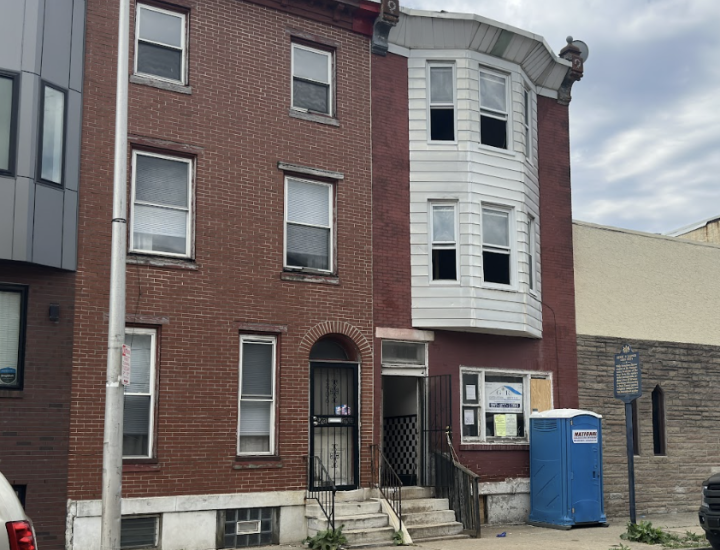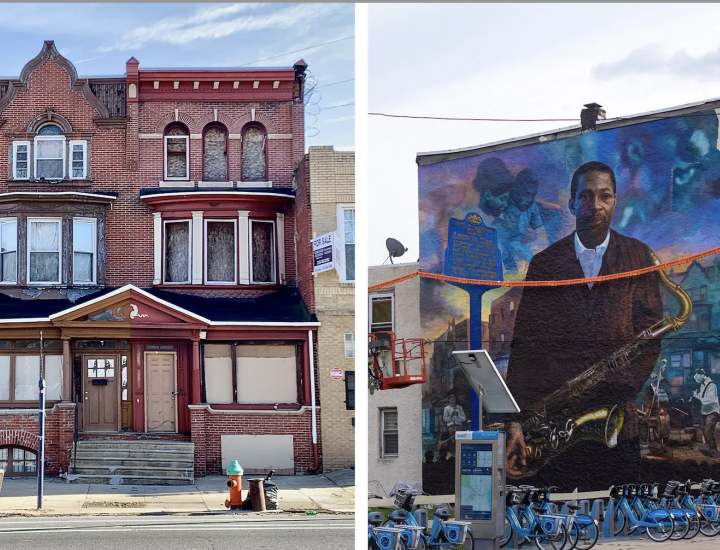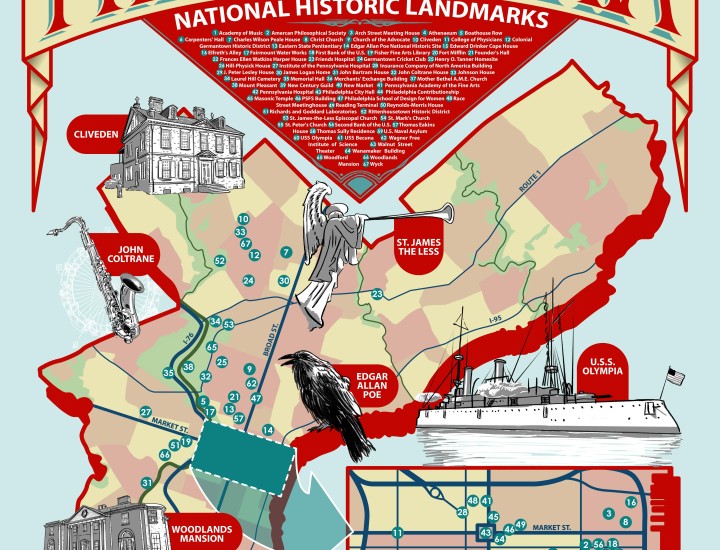Preserving Philadelphia's African American Heritage: Stories of Restoration and Recognition
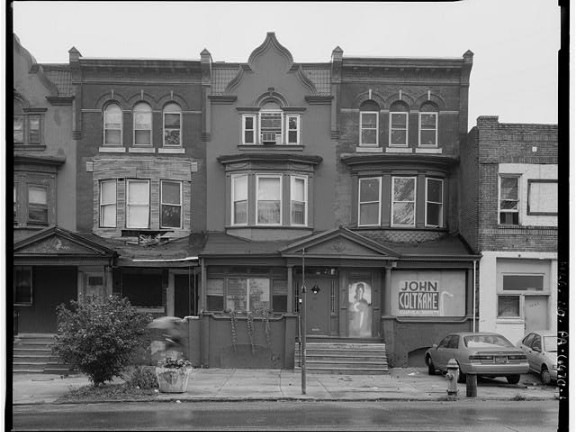
It’s no secret that Philadelphia is a city rich with history and home to iconic art. Some of the most notable artists of the country have lived right in this city and produced creative works while they did so. Among these famed creatives are Marian Anderson, John and Alice Coltrane, Henry O. Tanner, and Paul Robeson. These past residents of Philadelphia are not only engrained in the city’s history, but key contributors to African American culture.
The homes they lived in are just as important, because it gives members of the community and tourists alike an image of the places in which they may have created art, started a family, or reminisced on their past successes. With each individual living in these respective homes at different times, their houses have all been in various stages of disrepair or restoration. A look into how these homes are doing now and what communities are doing to preserve them can show which ones may need more financial or communal support, but how all are deserving of visits and recognition to keep their structures, and the memories within them, alive.
National Marian Anderson Museum
A well-preserved home with a fully flourishing historical society, the National Marian Anderson Museum recognizes the wonderful art and achievements of the Philadelphia-born singer. The red-brick home on South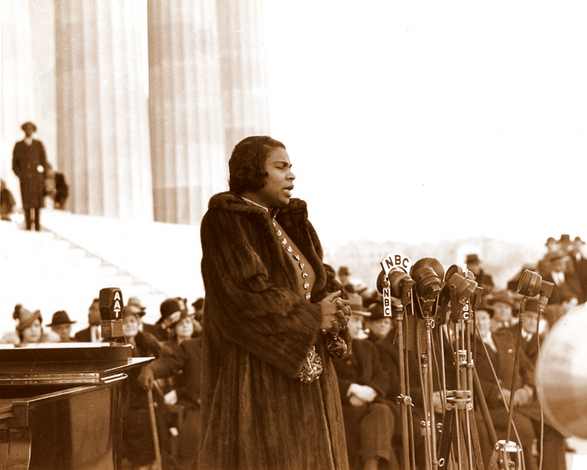 Martin Street, or Marian Anderson Way, is complete with a unique entertainment center in the basement. Anderson bought the historic home in 1924, during a time when African American individuals were not permitted to go out socially, so Anderson would host and entertain friends and fellow artists in her own home. She embarked on tours across the country, Europe, and Latin America throughout the 30s, and eventually gave her final concert in 1965.
Martin Street, or Marian Anderson Way, is complete with a unique entertainment center in the basement. Anderson bought the historic home in 1924, during a time when African American individuals were not permitted to go out socially, so Anderson would host and entertain friends and fellow artists in her own home. She embarked on tours across the country, Europe, and Latin America throughout the 30s, and eventually gave her final concert in 1965.
The home has been run by the historical society for almost 3 decades and has remained well-kept, until a flood devastated parts of the home and many historical pieces in 2020. Well-organized fundraising and initiatives for repairs of the building and artifacts have taken place, but the 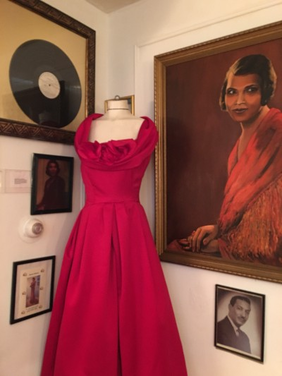 unfortunately only remains open for virtual tours, as it has not yet been completely restored. GPA recognized CEO of the museum, Jillian Pirtle, for her role with the museum and restoration efforts by awarding her with the Globy Award for Heritage and Preservation Leadership in 2021. Bringing awareness to such an influential African American singer is an impactful way to contribute to the necessary conversation around black history in Philadelphia, because these artists and their impact on the city's cultural and social scene are not discussed enough. Pirtle and the historical society are still working hard to bring in donations and keep the interest in Marian Anderson alive amidst the restoration, and hopefully the building itself will reopen for the public to experience soon.
unfortunately only remains open for virtual tours, as it has not yet been completely restored. GPA recognized CEO of the museum, Jillian Pirtle, for her role with the museum and restoration efforts by awarding her with the Globy Award for Heritage and Preservation Leadership in 2021. Bringing awareness to such an influential African American singer is an impactful way to contribute to the necessary conversation around black history in Philadelphia, because these artists and their impact on the city's cultural and social scene are not discussed enough. Pirtle and the historical society are still working hard to bring in donations and keep the interest in Marian Anderson alive amidst the restoration, and hopefully the building itself will reopen for the public to experience soon.
view more photos of the anderson home
John and Alice Coltrane House
A few blocks from the Marian Anderson Residence Museum sits the John Coltrane House. One of the most admired musicians of the mid 1900s, John Coltrane lived on North 33rd Street during the 40s, with his wife and fellow jazz musician, Alice. Within the late 19th-century, red-brick home, John created his iconic jazz album, Giant Steps. The home itself has been designated as a National Historic Landmark, honoring the Coltranes and recognizing their presence in Philadelphia’s history. However, since the couple moved on from the home, the house fell into disrepair, with the front becoming destabilized, paint chipping, and general interior problems persisting.

With the NHL designation at risk if the home’s upkeep was not tended to, the home’s most recent owners and the Strawberry Mansion Community Development Corporation (SMCDC) partnered to restore the landmark, with repairs taking place over almost two decades. The John and Alice Coltrane House is now run by the SMCDC community-based nonprofit and officially became the John Coltrane Museum and Cultural Arts Center, which have become integral parts “of the larger ongoing initiative to revitalize the historic Strawberry Mansion neighborhood and create a gateway into the community.” The Museum and Cultural Arts Center were also recognized for community action in 2022 by the Preservation Alliance for Greater Philadelphia, denoting their deep commitment to the surrounding community as well as to sharing the Coltrane legacy. The Coltrane name is renowned in the music world, and the family’s connection to Philadelphia should continue to be highlighted in order for the public to see the numerous and significant examples of African American heritage in the city.
Henry Ossawa Tanner House
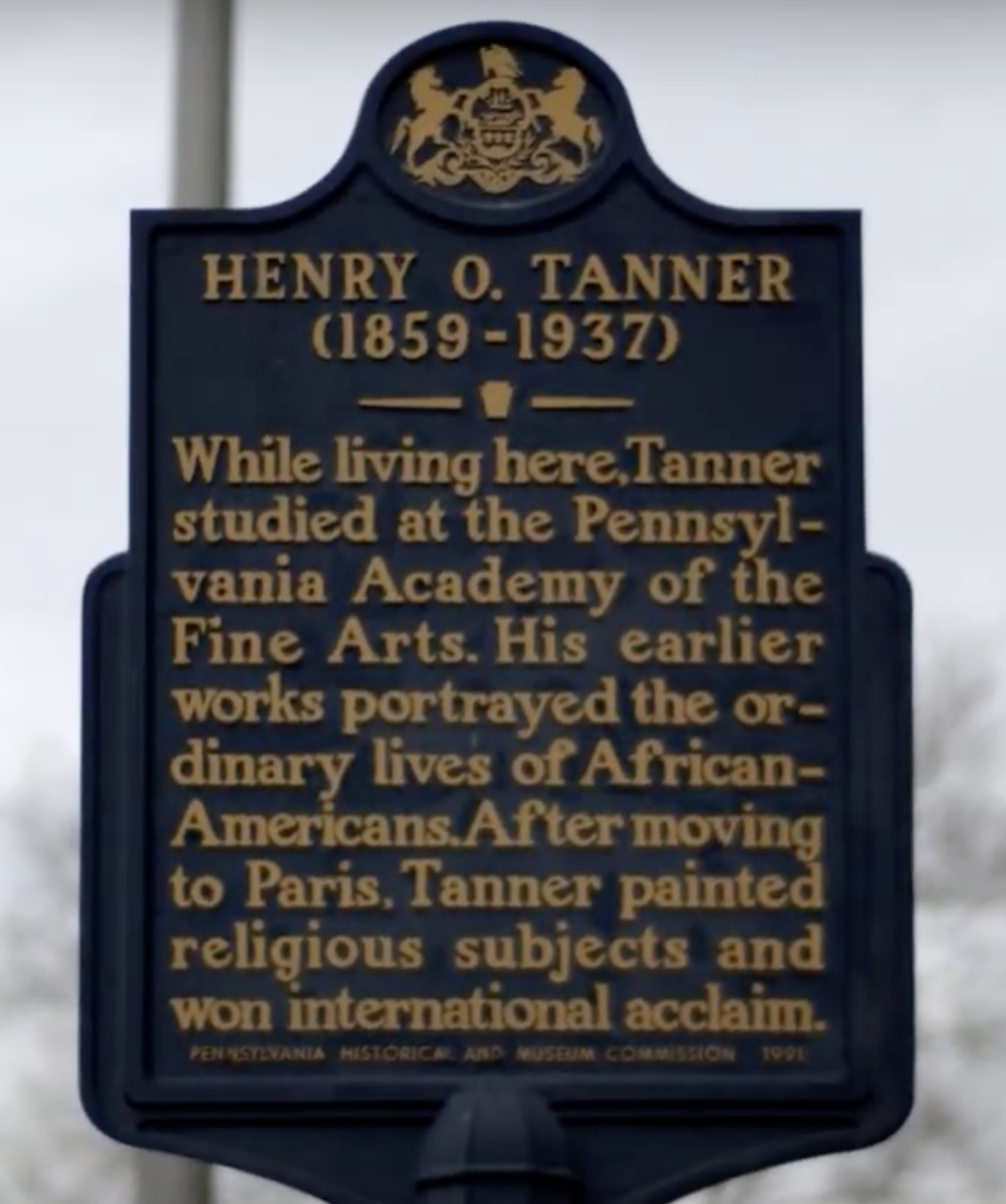 Up the street from the Coltrane House, Henry Ossawa Tanner grew up and developed his love of painting within his childhood home off of Ridge Avenue. An internationally acclaimed African American artist, Henry O. Tanner spent most of his life abroad, creating famous artworks from the late 19th-century until the 1920s. As the former home of Tanner and his notable family members, the house has been designated as a National Historic Landmark, so the preservation of such a historical structure should be a priority for the community and city. However, the home had not received the attention it needed; it was even deemed an unsafe structure and listed as one of America’s 11 Most Endangered Historic Places by the National Trust for Historic Preservation in 2023.
Up the street from the Coltrane House, Henry Ossawa Tanner grew up and developed his love of painting within his childhood home off of Ridge Avenue. An internationally acclaimed African American artist, Henry O. Tanner spent most of his life abroad, creating famous artworks from the late 19th-century until the 1920s. As the former home of Tanner and his notable family members, the house has been designated as a National Historic Landmark, so the preservation of such a historical structure should be a priority for the community and city. However, the home had not received the attention it needed; it was even deemed an unsafe structure and listed as one of America’s 11 Most Endangered Historic Places by the National Trust for Historic Preservation in 2023.
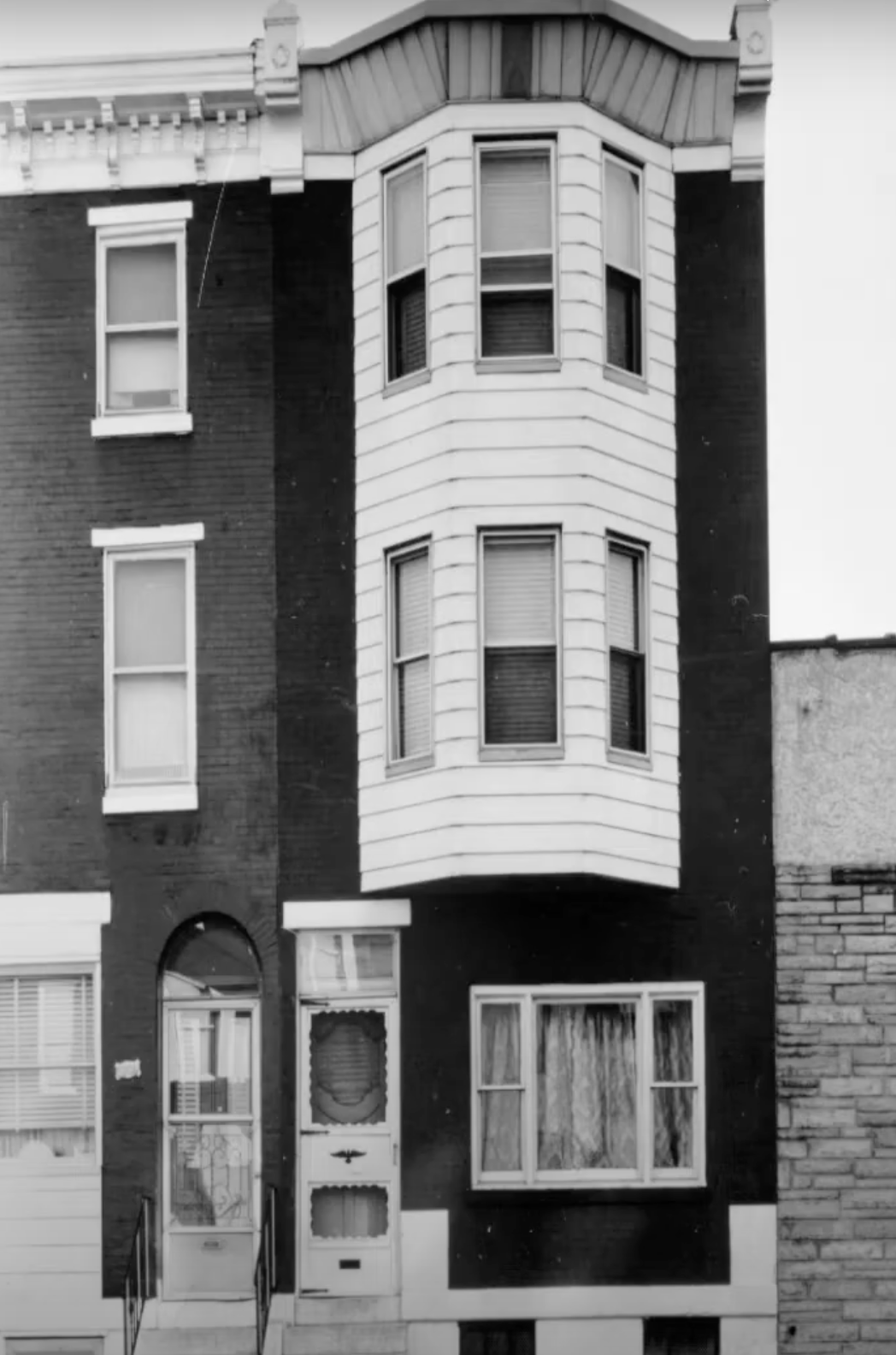 Now, the Center for the Preservation of Civil Rights Sites (CPCRS) is answering the call and urgently trying to raise money for stabilization efforts alongside Friends of Henry O. Tanner House and the Preservation Alliance of Greater Philadelphia. The task at hand is a massive undertaking, but preliminary stabilization efforts were able to start in July 2023. Advocates for the home are bringing attention back to it and their efforts have even been featured on national news.
Now, the Center for the Preservation of Civil Rights Sites (CPCRS) is answering the call and urgently trying to raise money for stabilization efforts alongside Friends of Henry O. Tanner House and the Preservation Alliance of Greater Philadelphia. The task at hand is a massive undertaking, but preliminary stabilization efforts were able to start in July 2023. Advocates for the home are bringing attention back to it and their efforts have even been featured on national news.
There are optimistic plans for the house, including assessments of the building, rehabilitation plans, nominating it for the Philadelphia Register of Historic Places, and establishing its role in the community. CPCRS is integrating their mission with the community by instituting the house as a “cultural and community landmark… in an effort of nurturing thriving neighborhoods where development refuses displacement” and planning events to bring the community together and to the home, but more donations and fundraising are still necessary to save the home and give Henry O. Tanner the recognition he deserves.
Paul Robeson House
Another African American artist, who was also an actor and activist, spent the final years of his life in Philadelphia, in what is now known as the Paul Robeson House and Museum. Paul Robeson was the son of a former enslaved man, a graduate from Columbia University’s law school, a successful actor and singer, and an avid civil rights activist. He traveled the world performing and advocating for civil rights, then settled in Philadelphia to live with his sister until he passed away in 1976. Due to his contributions to art, politics, and Philadelphia, the West Philadelphia Cultural Alliance (WPCA) took ownership of the home and dedicated it to sharing Paul Robeson’s legacy with the community.
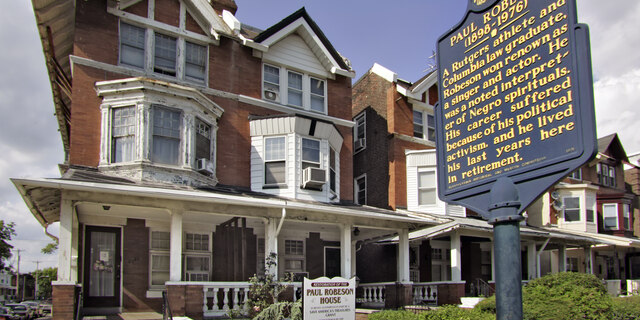
After being left vacant for over a decade, the home had very little appeal left with its dilapidated porch and barren rooms, but WPCA sought to restore the home to its former condition. To give future visitors a sense of

the kind of home Paul Robeson had lived in, the organization attempted to replicate the style of that time while making it functional for WPCA to work out of. Now, the Paul Robeson House and Museum proudly exhibits artifacts from Robeson’s life, hosts musical events, art shows, and tours, participates in the West Philly Porchfest, and even has its own Paul Robeson Chess Club. The Museum has weaved itself into the fabric of the West Philadelphia neighborhood and its continued involvement in the community will allow the building and the museum to continue honoring Robeson for years to come.
African American Legacies
Comparing the state of these homes can tell quite a story; there is still work to be done in adequately recognizing the legacies of the African American artists and activists who called Philadelphia home. When one thinks of the history of Philadelphia, the Liberty Bell and Independence Hall are likely images that come to mind. But places reflective of African American history deserve the same amount of recognition as these white-centric sites in the city. Recognition not only allows important artists and activists’ memories to live on, but can also lead to increased financial and governmental support of these important sites, so that they can continue educating the public and honoring the legacies of these individuals.
Not only are these homes important to the city of Philadelphia’s history, but they also have so much inspiration to offer to individuals. The entertainment center in Marian Anderson’s home reflects a deep love of performing and a connection to the musical community. Visitors can witness the paths of great artists, as the memories of John Coltrane constructing an iconic album live within the walls of his Philadelphia home and Henry O. Tanner likely created childhood art pieces in his home while he was on his way to becoming an esteemed painter. Paul Robeson’s house is now home to the WPCA, allowing them to continue important work in highlighting African American culture and history and inspiring others to do the same.
Consider visiting and supporting these sites firsthand to witness the legacies of these artists and find your own avenue of inspiration. By doing so, Philadelphia can further preserve its collective heritage, ensuring that African American history becomes more integral to its culture and remains at the forefront of the minds of both residents and visitors.

